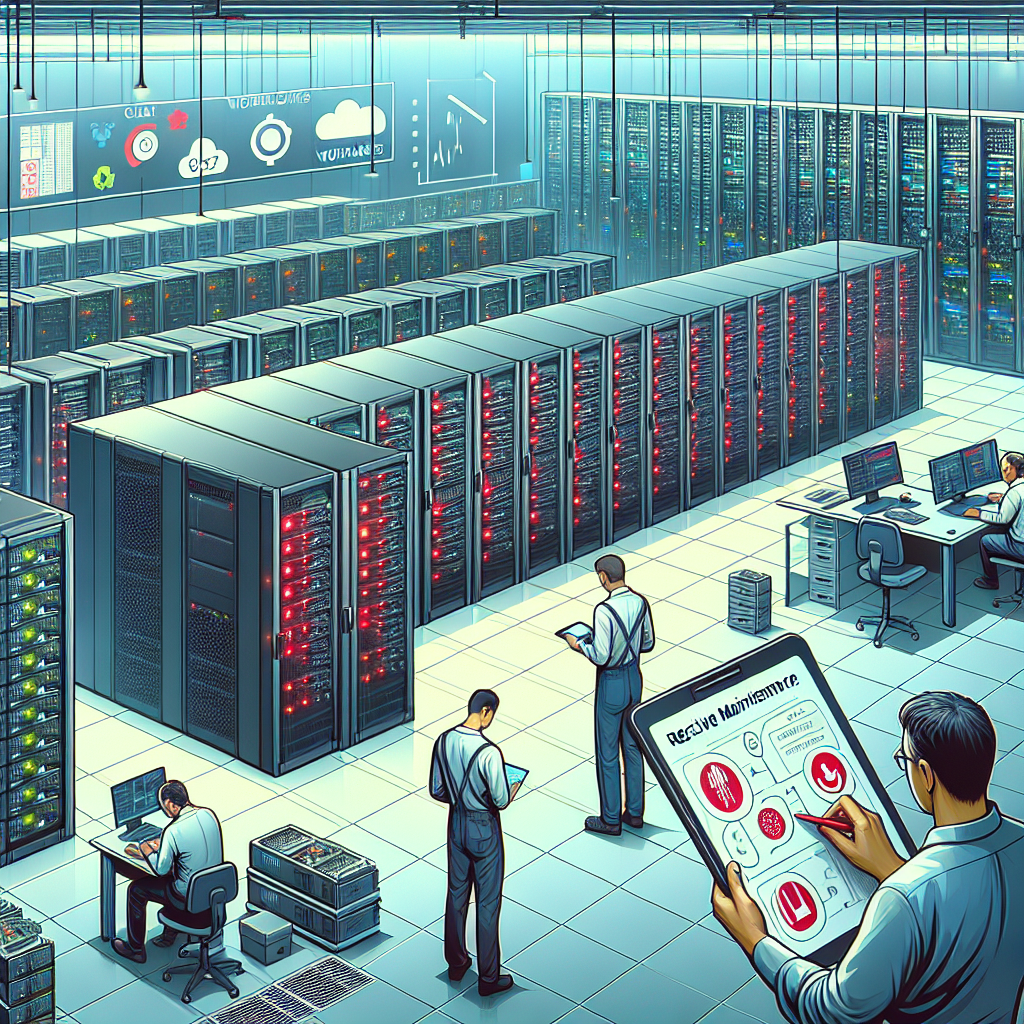In today’s fast-paced world, data centers play a crucial role in the operation of businesses, governments, and other organizations. These facilities house the servers, storage devices, networking equipment, and other infrastructure that enable the processing, storage, and transmission of data. As such, it is essential that data center management teams have effective maintenance strategies in place to ensure the smooth and uninterrupted operation of these critical facilities.
One key aspect of data center maintenance is reactive maintenance, which involves responding to equipment failures and other issues as they arise. While proactive maintenance, such as regular inspections and preventive maintenance tasks, is important for identifying and addressing potential problems before they lead to downtime, reactive maintenance is also necessary to address unexpected failures and keep the data center running smoothly.
In order to effectively manage reactive maintenance in a data center environment, there are several best practices and considerations that should be taken into account. These include:
1. Establishing a clear process for reporting and responding to issues: It is important to have a well-defined process in place for reporting equipment failures and other issues, as well as a system for prioritizing and responding to these incidents in a timely manner. This can help ensure that critical issues are addressed quickly and efficiently to minimize downtime.
2. Monitoring equipment performance and health: Monitoring the performance and health of data center equipment can help identify potential issues before they escalate into major failures. Utilizing monitoring tools and technologies can provide valuable insights into the condition of critical systems and help prioritize maintenance tasks.
3. Implementing a robust maintenance management system: A comprehensive maintenance management system can help track maintenance activities, schedule tasks, and manage work orders efficiently. By implementing a system that centralizes maintenance information and streamlines communication between team members, data center management teams can improve their ability to respond to reactive maintenance issues effectively.
4. Utilizing predictive maintenance technologies: In addition to reactive and proactive maintenance strategies, predictive maintenance technologies can help forecast equipment failures based on data analytics and machine learning algorithms. By leveraging predictive maintenance tools, data center management teams can proactively address potential issues before they result in downtime, saving time and resources in the long run.
5. Training and empowering maintenance staff: Investing in training and empowering maintenance staff can help improve their skills and knowledge, enabling them to effectively address reactive maintenance issues and make informed decisions in high-pressure situations. By fostering a culture of continuous learning and development, data center management teams can enhance the overall effectiveness of their maintenance operations.
In conclusion, the role of reactive maintenance in data center management is essential for ensuring the reliable operation of critical infrastructure. By implementing best practices and considerations such as establishing clear processes, monitoring equipment performance, utilizing maintenance management systems, leveraging predictive maintenance technologies, and investing in training and empowering maintenance staff, data center management teams can improve their ability to respond to issues quickly and effectively, minimizing downtime and maximizing operational efficiency.


Leave a Reply